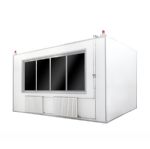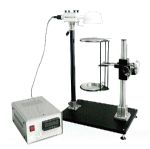- Product Catagory
- Tensile Strength Testing Machine
- Cables Flammability Testing Equipment
- Building Materials Flammability Testing Equipment
- Luggage Test Machine
- Textile Testing Equipment
- Color Fastness Instruments
- Textile Physical Test Instruments
- Lab Dyeing Instruments
- Flammability Test Chamber for Textile
- Consumables for Textile Testing
- Toys Safety Testing Equipment
- Physical & Mechanical Testing
- Flammability Testing
- Clamps for Toy Testing
- EN71-8,ISO8124-4
- Furniture Testing Machine
- Chair Testing Machine
- Mattress Testing Machine
- Furniture Testing Equipment
- Tables Test Machines
- Enviromental Chamber
- Leather and Footwear Testing Instruments
- Mobile Phone Testing Equipment
- Contact us
- Tel:86-769-23830463,86-13751491529
- Fax:86-769-38818154
- Contact:Ivy Xie
 [email protected]
[email protected] - Msn
 [email protected]
[email protected] Whatsapp/Wechat +8613751491529
Whatsapp/Wechat +8613751491529- Skype
 skylineinstruments
skylineinstruments happy_go_lucky4477
happy_go_lucky4477
- Site:Home > Building Materials Flammability Testing Equipment > Window Fire Test Device
- Product Images
- detailed description
Fire-Proof Test For Outer Wall External Thermal Insulation System
Product introduction
The window fire test model simulates a vertical building surface consisting of a main wall and a vertical auxiliary wall.
The external thermal insulation system is installed on the building surface. The opening of the combustion chamber at the bottom of the test model simulates the windows or openings of the floor in the actual building. The ignited wood or gas flame overflows from the window to simulate the fire after ignition in the room. When a flame overflows from a window or hole, it attacks the external thermal insulation system, checks the damage degree of the external thermal insulation system, and judges its flame propagation. The total heat released in 30 minutes is about 4500 MJ, and the peak heat release rate is about (3 + 0.5) MW.
Standard : BS 8414-1:202 / GB/T 29416:2012
Performance characteristics
1. The test system provides the ignition alarm after 5 minutes. When ignited, the test start time can be automatically determined. At the same time, the test overtemperature can be automatically distinguished. At the same time, the computer can display combustion test by visual frequency. At the same time, computer software can record dropping time, collapse time, temperature value and display temperature curve and other test related information.
2. One wind speed sensor, 0-10M/S, with an accuracy of 0.1M/S;
3. Two cameras, including a computer display device 2.
4. K-type thermocouple: with stainless steel sheath, the temperature range is 0-1038 degrees, the temperature accuracy is (+0.1%) and the thermocouple wire is 500 feet.
5. ADAM-4118 Module: Strong 8-way Thermocouple Input module, 8-way independently configurable differential channel; Wide temperature operation; Wider operating temperature: -40-+85 degrees C; High noise resistance: 1KV surge protection voltage input, 3KV EFT and 8KV ESD protection; Strong anti-interference: 1KV surge protection at power input, 3KV EFT, 8KV ESD protection, wide. Power input range: +10~+48 VDC; input range: +10~+48 VDC;
6. Two computers;
7. Three electronic control boxes;
8. One signal conversion box;
9. Field wiring.
Electrical requirements: 220V, 50HZ, 5Aenvironmental requirements: temperature from 10°C to 35°humidity (65 ± 5) %
Application : building materials

- Related ProductsMore>>









-Test-Device.jpg)
